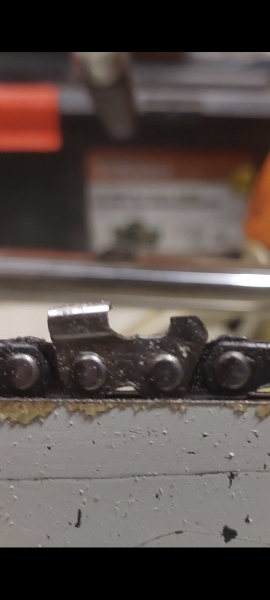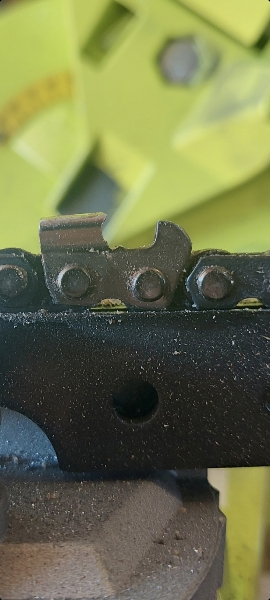JD is on the money the cutters definitely need more hook.
The flat top rakers will also add more friction - they need to be rounded - look at the ones below.
The top one from Will Malloff's chainsaw lumber making book, the one under that is mine..
In the photo below of your cutter the angle shown in red is the raker angle and it's about 7.9º.
Stock chain is about 5.8º which I reckon is too shallow for most of your timber.
I never worry about raker depth or even cutter length and stopped using death gauges since 2007.
In Aussie hardwoods I use a raker angle of 6.5º and everything else comes out in the wash and chains last until the cutters start falling off from being so small.
Your raker angle is right up there but should still work for narrowish cuts in your timber.
Note - it's not the slope on the top of the raker but the angle between the cutter edge the wood and the point where the raker touches wood..
View attachment 965946
If that raker had a curved top was curved and the hook was right that chain should cut like a hot knife thru butter.
Depending on how wide your log is, once the raker is rounded this will increase the raker angle to the point where it may even be too much and teh cutters will just grab.
Then, to lower the angle you will have to take (lots of) swipes of your cutter but only do this if the cutters grab so's it starts to stall the saw
So,
1) add significant more hook,
2) round of the raker top, and (mat need to take some swipes of the cutter too)
3) clean out the gullets, to improved sawdust flow.
The factors to balance up are
Cutter Hook
Raker angle
Wood hardness
Wood width
Saw power
Drive sprocket pin count.
.































































